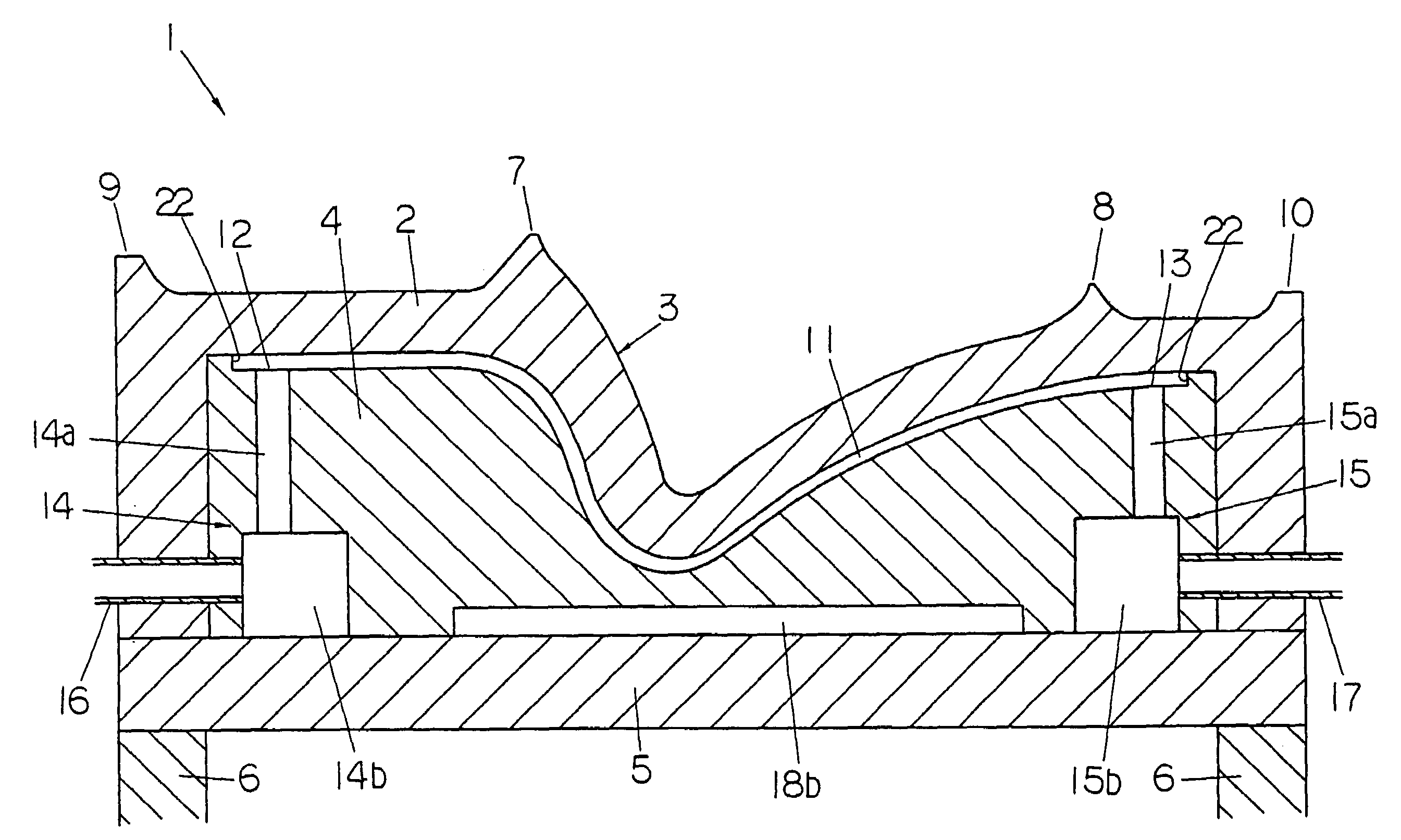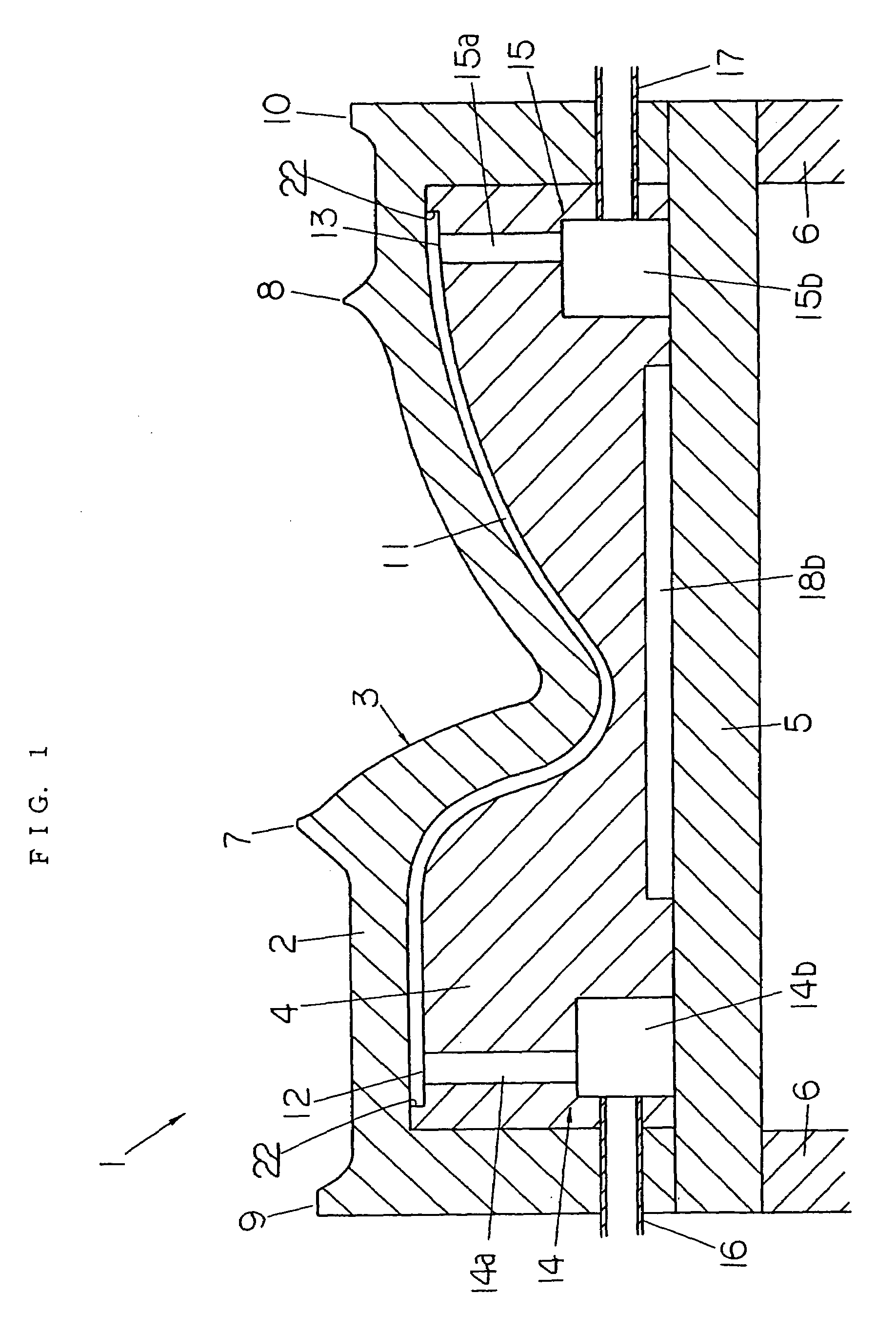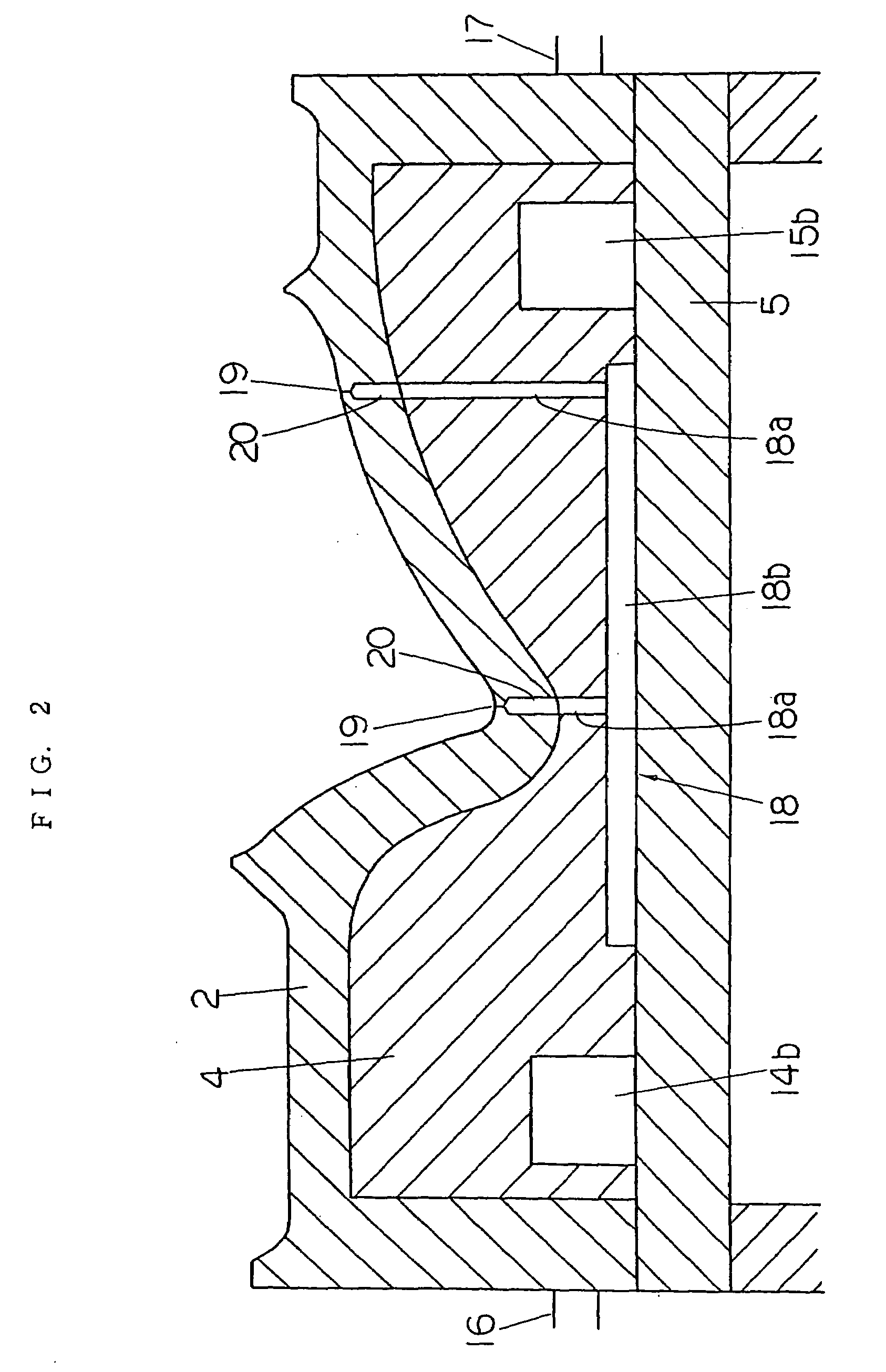Furthermore, following this contact, the metal mold is forcibly cooled by the cooling means, so that the blow-molded body can be quickly hardened and removed, thus shortening the cycle time.
(1) Means in which heating and cooling of the metal mold are accomplished by laying pipes along the back surfaces of the metal mold, and alternately circulating a heating fluid (e.g., high-temperature water or high-temperature steam) and a
cooling fluid (e.g., cooling water) through these pipes. In this case, it is difficult to lay pipes so that these pipes adhere tightly to the back surfaces of the metal mold along the entire length of the pipes; furthermore, since the pipes are round, the contact area with the metal mold is also small. Accordingly, the heat exchange efficiency is poor, and the heating and
cooling rates cannot increase.
(2) Means in which pipes (consisting of a metal whose
melting point is higher than that of the metal mold) are disposed inside the
casting mold when the metal mold is cast, so that pipes are cast inside the walls of the metal mold. In this case, gaps are formed between the cast pipes and the metal mold during use. Furthermore, since the pipes are round, the contact area with the metal mold is small in relation to the cross-sectional area of the pipes. As a result, the heat exchange efficiency is poor; and in addition, since the thickness of the metal mold must be increased, the thermal capacity of the metal mold increases, and the heating and
cooling rates do not increase.
(3) Means in which
drill holes are formed vertically and horizontally inside the walls of the metal mold from the back surfaces of the metal mold, and are caused to communicate with each other, and a heating or
cooling fluid is circulated through these holes. In this case, the
advantage of direct contact of the heating or cooling fluid with the metal mold is obtained. However, since the
drill holes are round so that the contact area between the metal mold and the fluid is small in relation to the cross-sectional area, the heat exchange efficiency is poor. In addition, since the thickness of the metal mold must be large, the thermal capacity of the metal mold is large. Moreover, since the
drill holes can only be formed in a rectilinear configuration, it may be impossible (depending on the shape of the metal mold) to form the required number of holes, so that the heating and
cooling rates cannot increase.
(4) Means in which spaces are formed on the back surface sides of the metal mold, and the metal mold is heated or cooled by circulating a heating or cooling fluid through these spaces (see Japanese
Patent Application Laid-Open (Kokai) No. 9-164583). In this case, since the heating or cooling fluid is circulated through large spaces, a large quantity of fluid is required, and the thermal capacity of the metal mold as a whole surrounding the spaces is also large; as a result, a large quantity of energy is consumed. In addition, since the fluid loiters (has a slow flow velocity) inside the spaces, the heat exchange efficiency is poor, and the heating and cooling rates cannot increase.
(5) Means in which thin plate bodies that form a cavity are disposed on the joining surfaces of the metal mold main body, and a
narrow gap is formed between the metal mold main body and the thin plate bodies, and cooling of the metal mold is accomplished by causing a
cooling medium to flow through this gap (see Japanese
Patent Application Laid-Open (Laid-Open (Kokai)) No. 10-235722). In this case, though rapid cooling of the thin plate bodies that form the cavity is possible, non-uniform flow of the
cooling medium occurs inside the gap, and the
cooling rate varies according to the position, thus tending to cause irregularities in the metal mold temperature.
 Login to View More
Login to View More 


